12 Vibrant Flowers to Add Color to Your Garden
A colorful backyard can brighten up any home and create a cheerful atmosphere. Choosing the right flowers makes it easier to enjoy vibrant blooms throughout the seasons. Some flowers require little space but still provide a big impact. Knowing when and how to care for these plants helps them thrive. This guide highlights some of the best flowers to add beauty and color to your outdoor space.
This post may contain affiliate links, which helps keep this content free. Please read our disclosure for more info.
Sunflowers
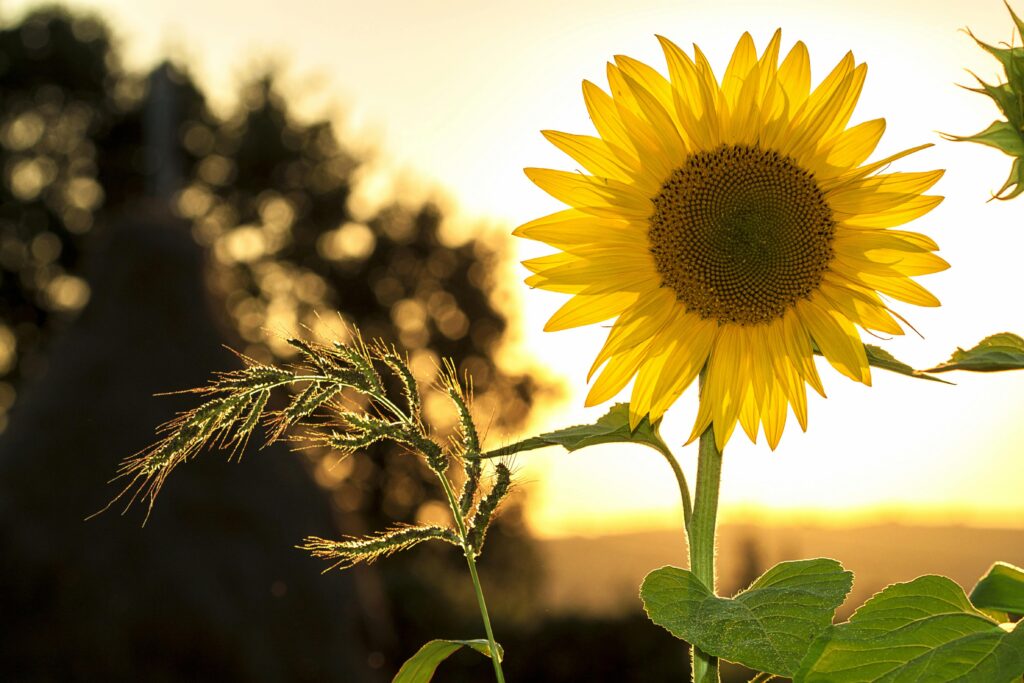
Sunflowers bring bright yellow hues that instantly brighten any backyard. They grow tall but do not require much space, making them ideal for smaller gardens or borders. These flowers typically bloom from mid-summer to early fall, creating a long season of color. They need full sun and well-drained soil to thrive.
Sunflowers are easy to care for, requiring regular watering but tolerating drought once established. Their large heads attract pollinators like bees and birds, which benefits the entire garden. Cutting mature flowers for indoor arrangements can extend their enjoyment. Sunflowers also provide seeds that wildlife love.
Petunias
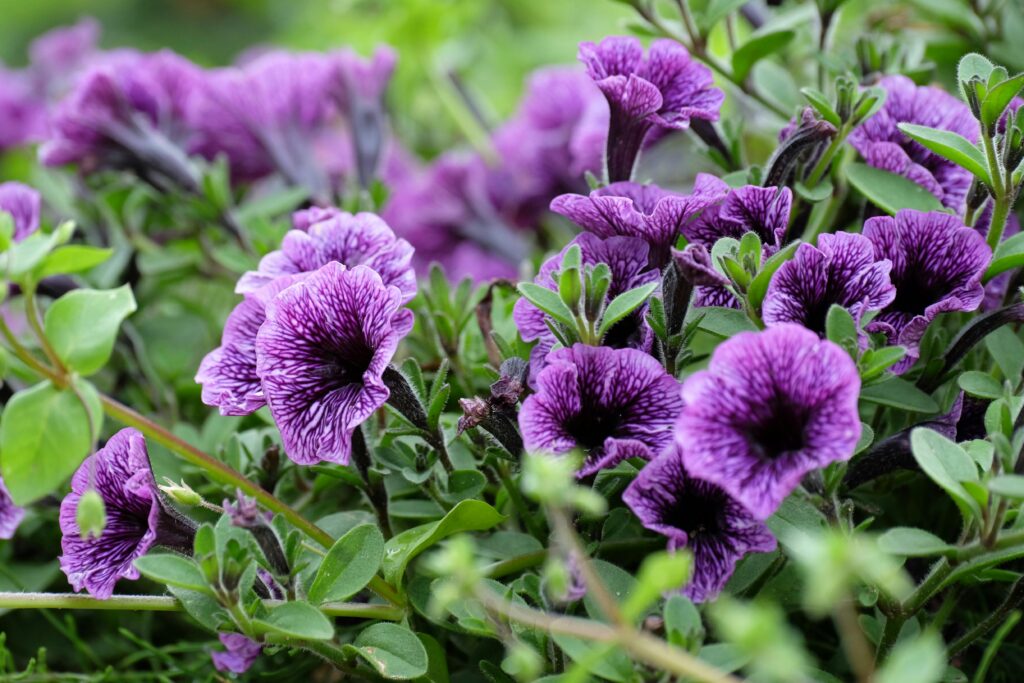
Petunias are popular for their vibrant colors ranging from pinks and purples to reds and whites. They bloom heavily from late spring through the first frost, ensuring continuous color. Petunias do not need much space and work well in pots, hanging baskets, or flower beds. They prefer full sun but can tolerate some shade.
These flowers require regular watering, especially in containers, but avoid waterlogging. Deadheading spent blooms encourages more flowers throughout the season. Petunias are relatively low maintenance and resistant to many pests. They add a cheerful and lively look to any backyard.
Zinnias
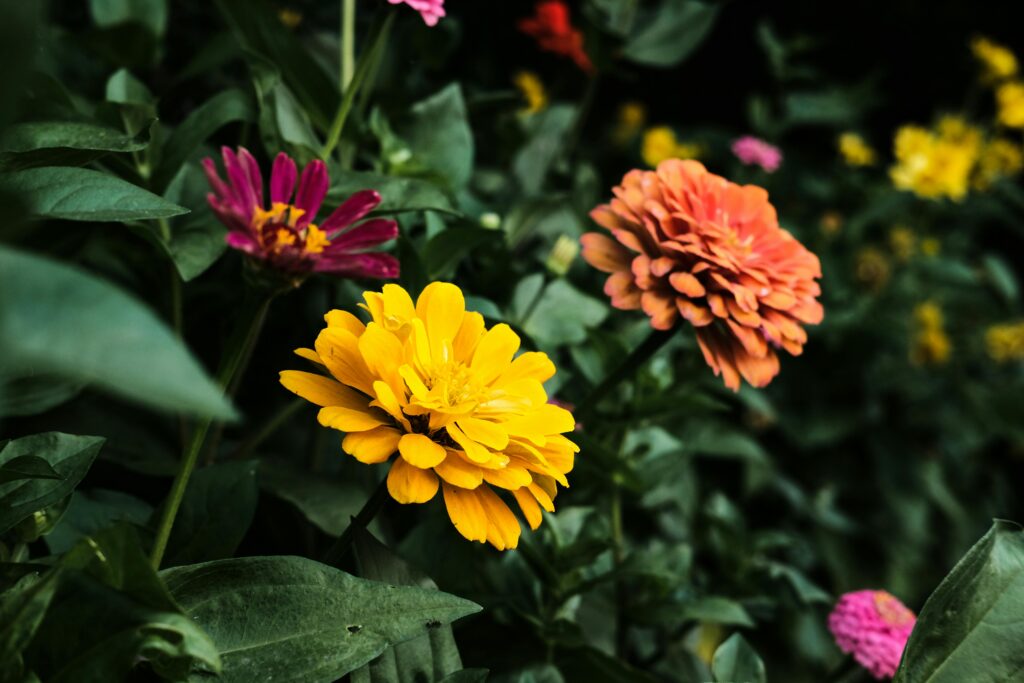
Zinnias provide a bold splash of color with shades of red, orange, pink, yellow, and white. They bloom from early summer until the first frost, offering long-lasting vibrancy. Zinnias grow upright and compact, making them suitable for small or large spaces alike. Full sun and well-drained soil help these flowers perform best.
They are easy to grow from seeds and need regular watering but avoid wet foliage to prevent disease. Deadheading encourages continued blooming and keeps plants tidy. Zinnias attract butterflies, adding movement and life to the garden. These flowers are a favorite for casual, colorful gardens.
Lavender
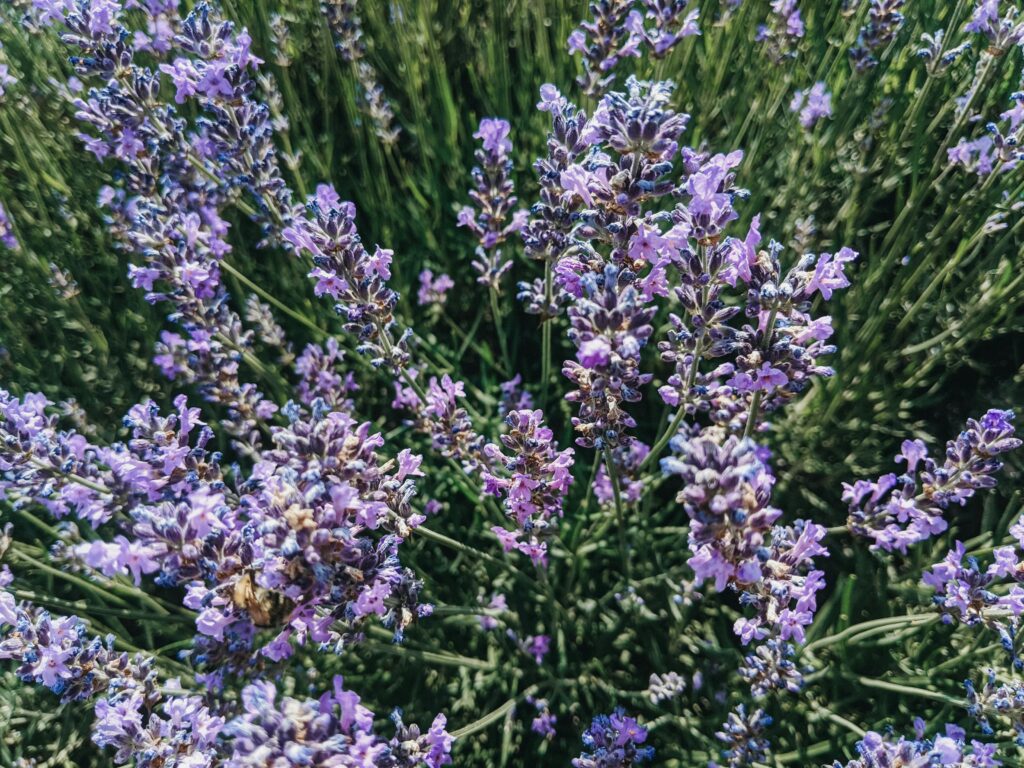
Lavender adds soft purple hues and a pleasant fragrance to the backyard. It grows in medium-sized clumps that do not take up too much space, fitting well in borders or rock gardens. Lavender typically blooms in late spring to early summer. It thrives in full sun and well-drained, slightly sandy soil.
This plant is drought-tolerant once established and prefers less frequent watering. Pruning after flowering helps maintain shape and encourages new growth. Lavender also repels some garden pests and attracts pollinators like bees. Its flowers can be harvested for dried arrangements or sachets.
Marigolds

Marigolds bring bright orange and yellow colors that create warmth in any garden. They bloom continuously from late spring through fall. Marigolds are compact and do not need much space, making them excellent for borders or containers. They grow best in full sun with moderately fertile soil.
These flowers are low maintenance, requiring only regular watering and occasional deadheading. Marigolds are known for their pest-repellent properties, protecting other plants nearby. They bloom prolifically and are ideal for beginner gardeners. Their vibrant colors stand out even in mixed plantings.
Dahlias

Dahlias offer large, dramatic blooms in a wide range of colors including reds, pinks, purples, and whites. They bloom from mid-summer until the first frost, providing extended color in the garden. While some varieties grow quite tall, many compact types fit well in smaller spaces. Dahlias prefer full sun and rich, well-drained soil.
These flowers need regular watering and benefit from staking to support taller stems. Deadheading helps extend the blooming period. Dahlias add texture and depth to garden beds with their layered petals. They are rewarding plants for gardeners willing to give them some attention.
Coneflowers (Echinacea)
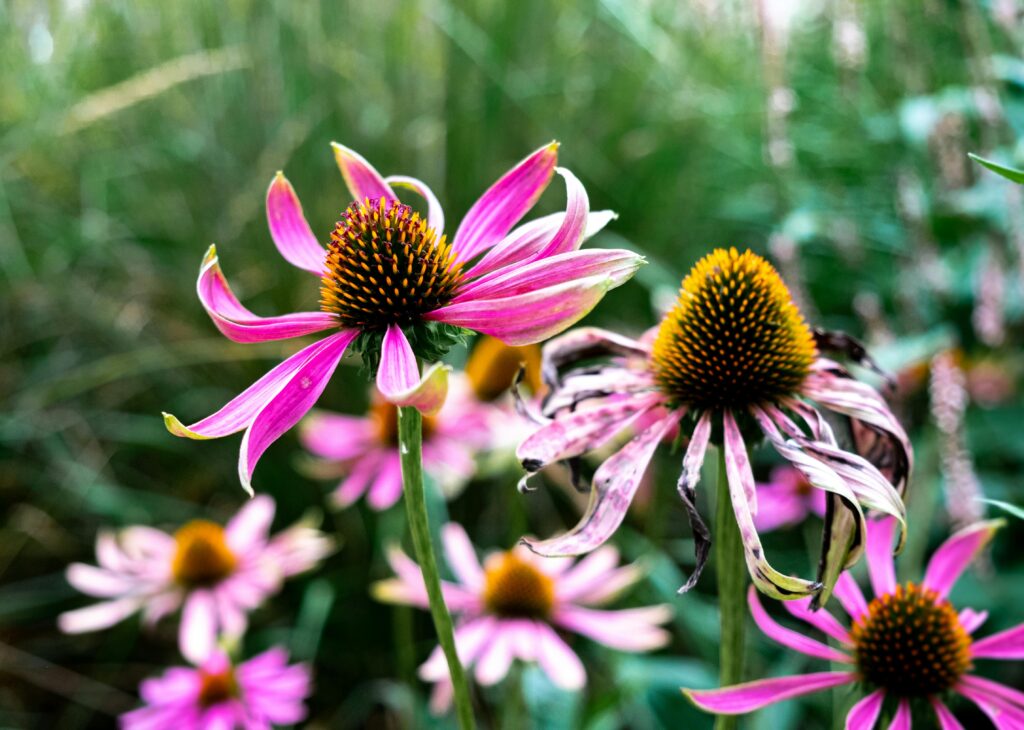
Coneflowers bring bold pink, purple, or white petals with a distinctive orange center. They bloom from early summer through fall, brightening the backyard for months. Coneflowers grow upright but do not require large space, fitting nicely in mixed beds. They thrive in full sun and tolerate poor soil conditions.
These perennials are drought-resistant once established and need minimal care. They attract butterflies and birds, enhancing garden biodiversity. Deadheading encourages more blooms and keeps plants neat. Coneflowers also offer medicinal benefits, adding another layer of interest.
Cosmos
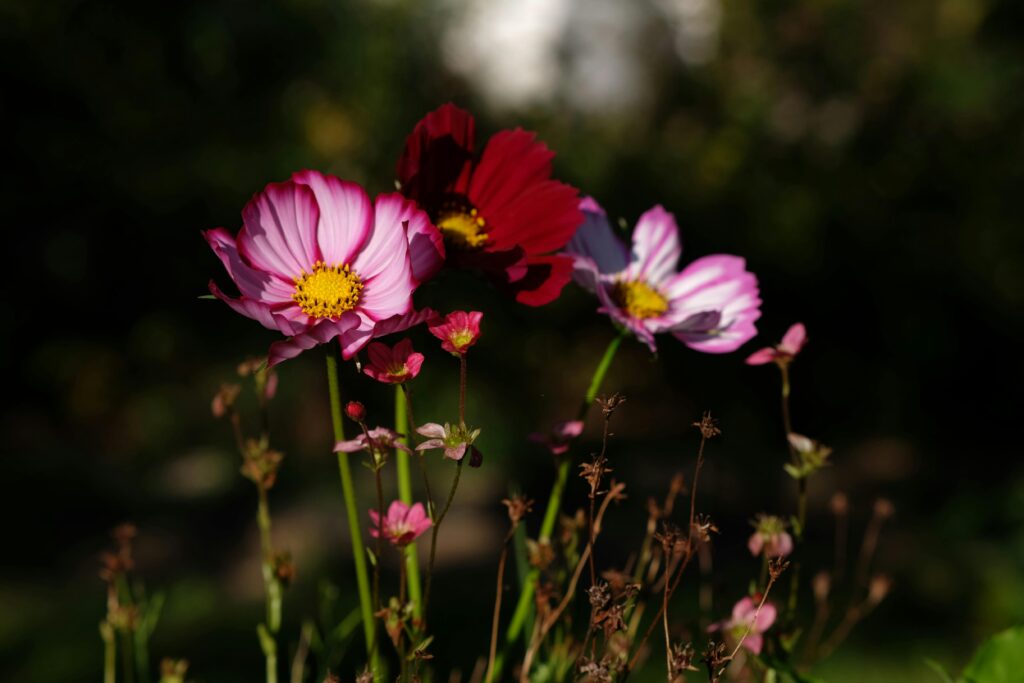
Cosmos flowers produce delicate, daisy-like blooms in shades of pink, white, and orange. They bloom from summer to fall and add a light, airy feel to gardens. Cosmos plants grow tall but with a slender profile, making them suitable for both small and large spaces. They prefer full sun and well-drained soil.
These flowers are drought-tolerant and require minimal watering. They attract pollinators and add movement with their slender stems in the breeze. Cosmos self-seed easily, helping fill the garden year after year. Their low maintenance nature makes them a favorite for many gardeners.
Snapdragons
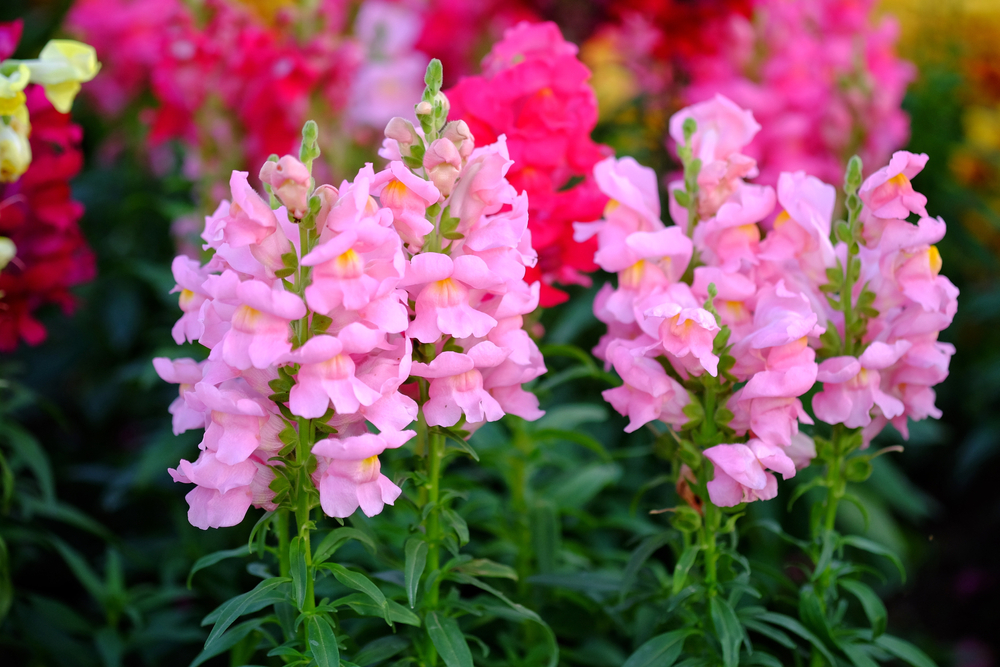
Snapdragons offer tall spikes covered in colorful flowers ranging from reds and pinks to yellows and whites. They bloom in cooler months of spring and fall, adding color when many plants do not. Snapdragons are compact and work well in beds or containers. They prefer full sun but can handle some shade.
Regular watering keeps snapdragons healthy, and deadheading extends their flowering period. These flowers attract bees and butterflies, contributing to pollination. Snapdragons are easy to grow from seed or starts. Their unique flower shape adds visual interest to any backyard.
Black-eyed Susans
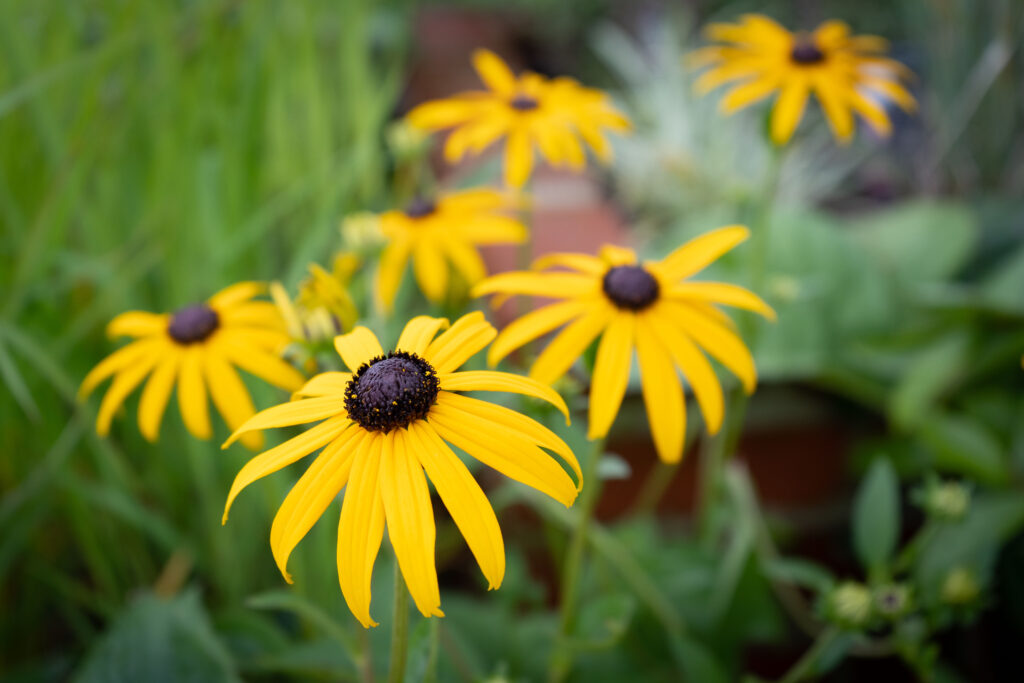
Black-eyed Susans display bright yellow petals with dark brown centers, creating cheerful color. They bloom from mid-summer through early fall and are well-suited for naturalistic or cottage gardens. These flowers grow upright and moderately tall but do not require excessive space. Full sun and well-drained soil support their growth.
They are low maintenance and drought-tolerant once established. Black-eyed Susans attract pollinators and provide seeds for birds. Deadheading prolongs bloom time and maintains appearance. Their bright color adds warmth to any backyard setting.
Peonies
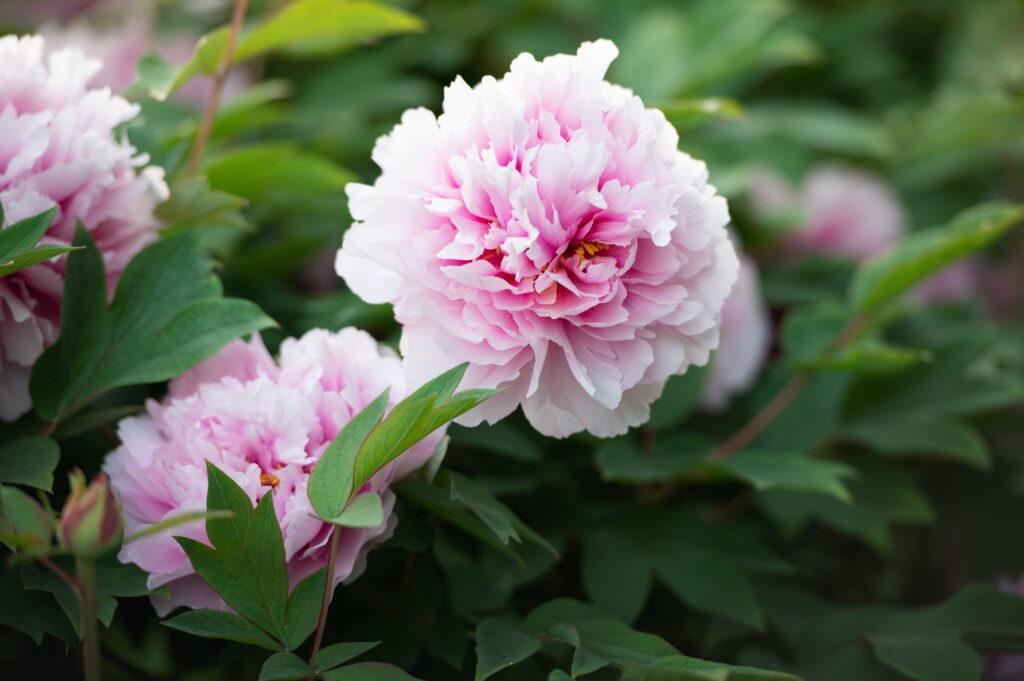
Peonies produce large, lush blooms in pink, red, white, and coral hues. They bloom in late spring to early summer, offering a burst of color and fragrance. Peonies grow as medium-sized bushes and fit well in garden beds or borders. They prefer full sun and fertile, well-drained soil.
These perennials need little care beyond occasional watering and support for heavy blooms. Peonies are long-lived and can thrive for decades. Their showy flowers make a strong visual impact. Cutting blooms for indoor arrangements is common.
Geraniums
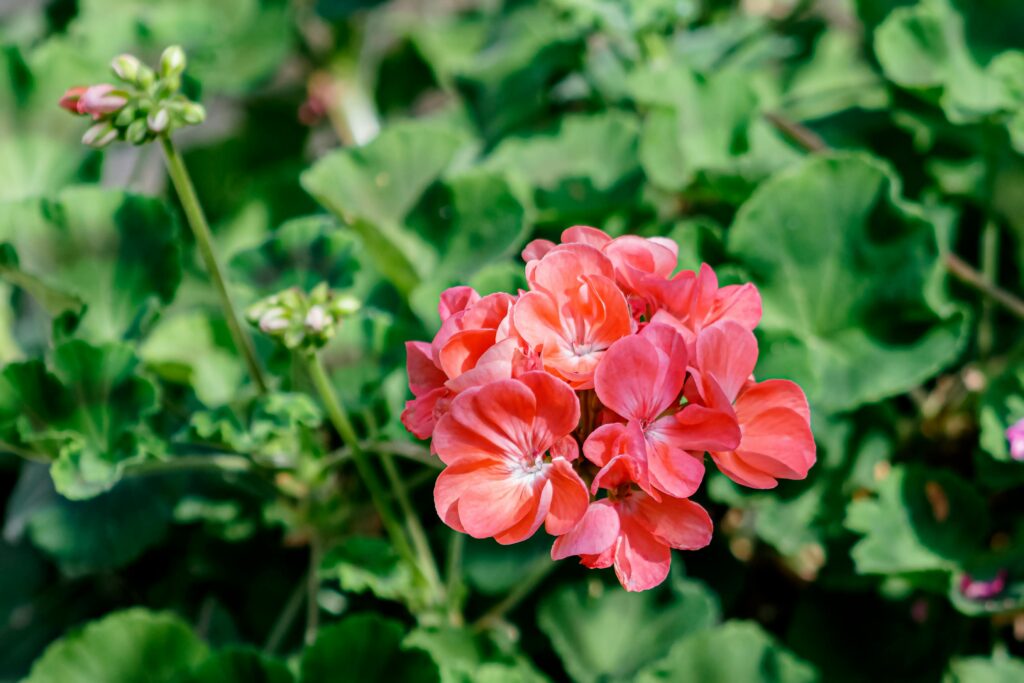
Geraniums offer clusters of small flowers in red, pink, white, and purple shades. They bloom from spring through fall, creating continuous color in the garden. Geraniums are compact plants suitable for containers, window boxes, or beds. They prefer full sun but tolerate partial shade.
Watering regularly but avoiding overwatering keeps geraniums healthy. Deadheading spent flowers encourages more blooms. They are resistant to many common pests and diseases. Geraniums provide easy color with low maintenance.
Selecting colorful flowers can transform your backyard into a lively and inviting space. Proper care and attention ensure these plants bloom beautifully year after year. By choosing flowers suited to your garden’s size and climate, you create lasting charm. Adding a variety of blooms provides continuous color and interest throughout the seasons.
This article originally appeared on Avocadu.
